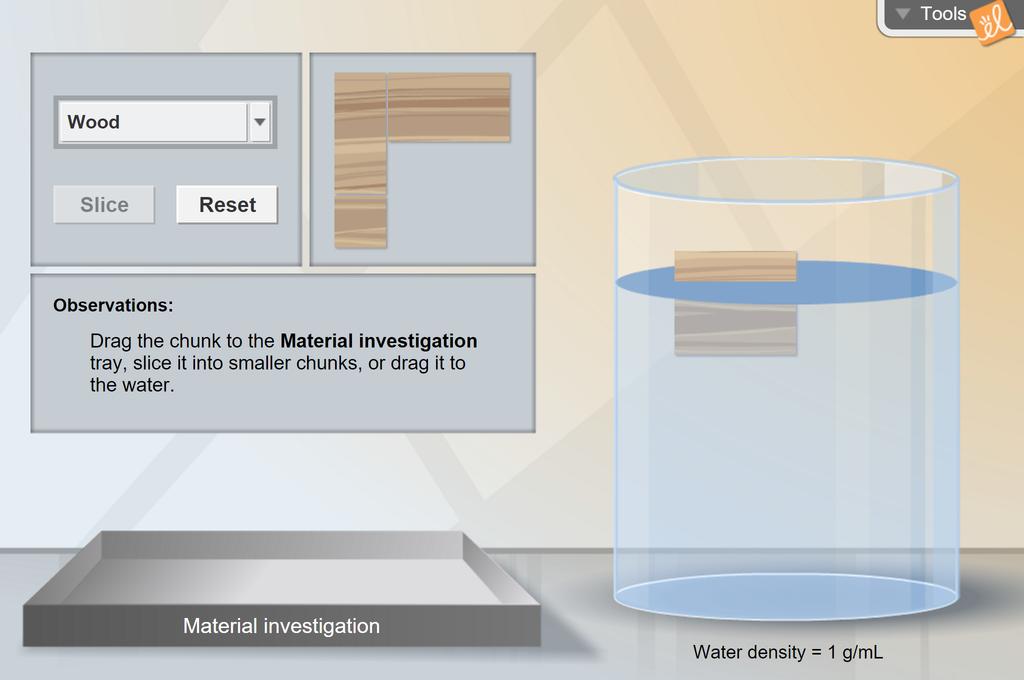Density Experiment: Slice and Dice
Drop a chunk of material in a beaker of water and observe whether it sinks or floats. Cut the chunk into smaller pieces of any size, and observe what happens as they are dropped in the beaker. The mass and volume of each chunk can be measured to gain a clear understanding of density and buoyancy.
Video Preview Launch GizmoDensity Experiment: Slice and Dice
Drop a chunk of material in a beaker of water and observe whether it sinks or floats. Cut the chunk into smaller pieces of any size, and observe what happens as they are dropped in the beaker. The mass and volume of each chunk can be measured to gain a clear understanding of density and buoyancy.
5 Minute Preview
Use for 5 minutes a day.
Questions Recommend
